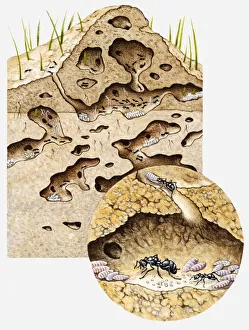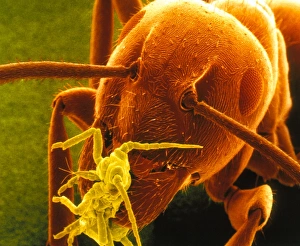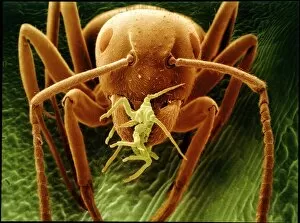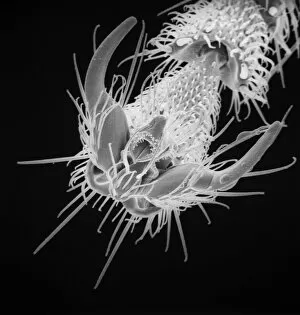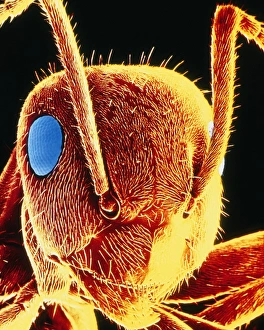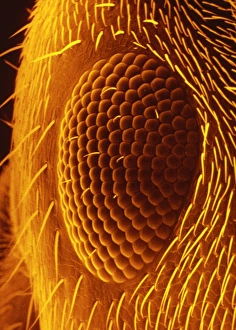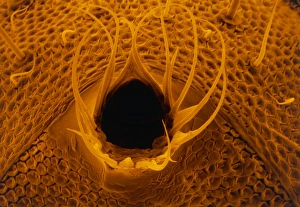Black Garden Ant Collection
The black garden ant, scientifically known as Lasius niger, is a fascinating creature that dwells beneath the surface
All Professionally Made to Order for Quick Shipping
The black garden ant, scientifically known as Lasius niger, is a fascinating creature that dwells beneath the surface. A cross-section illustration of their intricate tunnel system inside the nest unveils a hidden world bustling with activity. These ants are diligent workers, always on the move and tirelessly carrying out their duties. In a colored scanning electron microscope (SEM) image, we witness a remarkable sight - a garden ant gracefully transporting a rose aphid. This symbiotic relationship between the two species showcases nature's delicate balance and interdependence. Zooming in closer through another SEM image, we observe an astonishing level of detail on the black garden ant's head. Its structure is meticulously designed to fulfill its various functions within the colony. The false-colored SEM further highlights this marvel of evolution. As we shift our focus back to their daily routines, ants can be seen diligently feeding together. Their collective efforts ensure survival for all members of their community. Lasius niger, commonly referred to as black garden ants due to their dark appearance, are highly adaptable creatures found across various habitats. They have mastered living alongside humans and can often be spotted scurrying around gardens or near food sources. These resilient insects possess an incredible ability to communicate using pheromones and navigate complex environments efficiently. Their social organization revolves around queens who lay eggs while worker ants maintain order within the colony. These captivating images provide us with glimpses into the mysterious world of black garden ants – from their intricate tunnels to their cooperative behavior and specialized body structures. It serves as a reminder that even in seemingly ordinary creatures like these tiny insects lies extraordinary beauty waiting to be explored and appreciated by those willing to take a closer look at nature's wonders.

